Welcome to the costa blanca and her beautiful countryside
The Costa Blanca is located in the southeast of Spain and extends between the towns of Denia and Pilar de la Horadada. Pilar de La Horadada is approximately at the height of the city Murcia. And following the coast down, Murcia is the next province. The Costa Blanca is a region within La Comunidad Valenciana, usually referred to as ‘Valencia’. This state consists of the provinces, Castellon, Valencia and Alicante. Author of this page, Agriturismo and Casa Rural Refugio Marnes is located in the province of Alicante, just inland on the Costa Blanca.
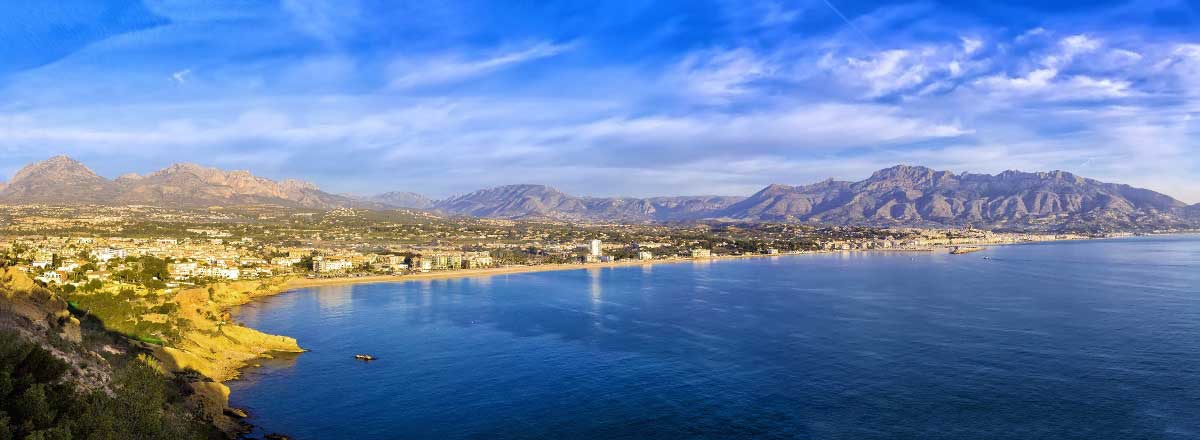
On this page about our area we take you by the hand to get to know the Costa Blanca and the province of Alicante. You can read about why climate here is so mild and pleasant all year round. We introduce you to the interior of the Costa Blanca, the Marina Alta and the Jalon Valley. We also take you to the many beaches and bays that you can enjoy all year round. Furthermore, we introduce you to the range of cultural options that also include the extensive culture of the Fiestas in the Valencian community . Enjoy reading!
The Costa Blanca has a gifted microclimate
According to the World Health Organization, this area has the healthiest climate in Europe. An average of 17 degrees in January is of course fantastic. But in the winter the temperatures during the day can go up to 20, 24 degrees or warmer. Our area is blessed with a very special microclimate. The fact that the triangular headland between the cities of Valencia and Alicante sticks into the sea plays an important role in this. In the winter, the Mediterranean Sea is still relatively warmer than the air temperature. So then there is a kind of hot water bottle around the Costa Blanca.
In the summer the reverse is the case and the sea provides some cooling. However, this is not the only factor that plays a role in this microclimate. Behind the Costa Blanca you find a large number of relatively low mountain ranges. However, these low mountains are high enough to prevent the cold from the interior to reach the Costa Blanca. A third factor is that there is a current in front of the coast that ensures that the clouds often give way.
Mild winters, mild summers in the provinces of Alicante and Valencia
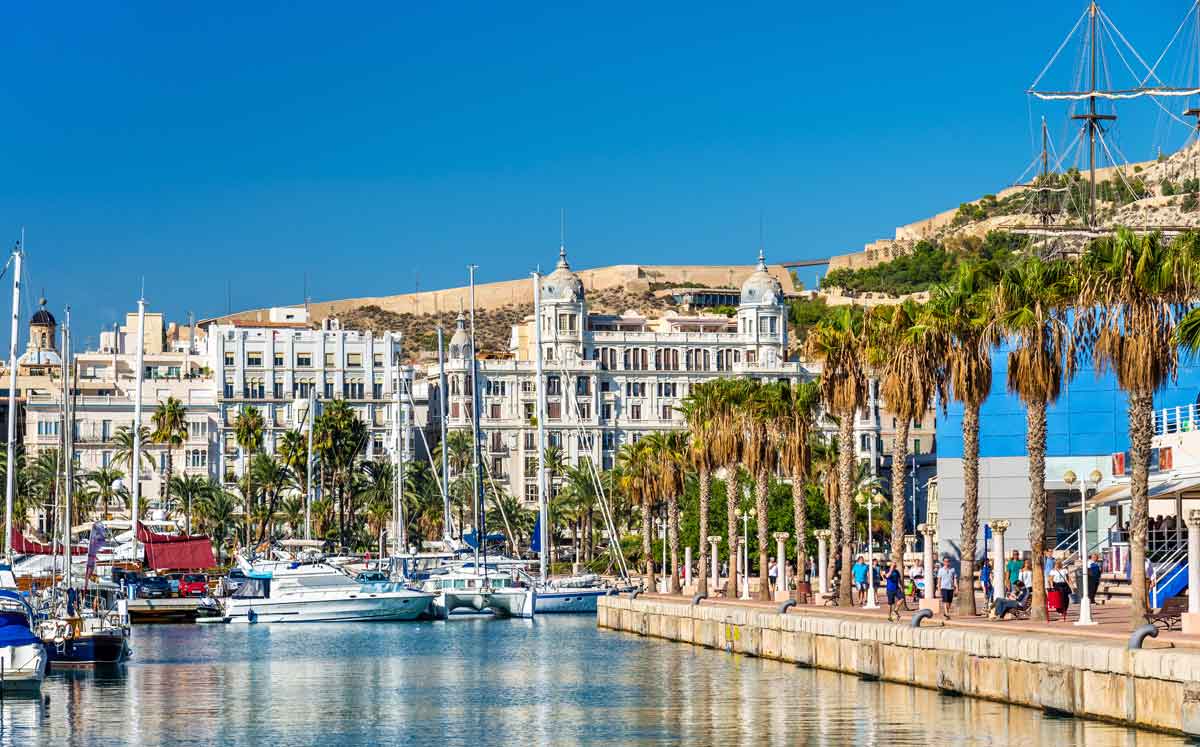
The microclimate was one of the reasons why we settled here with Casa Rural Refugio Marnes. In the fall, winter and spring this is a wonderful area for walking holidays and cycling holidays. Furthermore, the Costa Blanca is also a known paradise for sports climbers who plan their climbing holidays here. The “organic” winter lasts only about 3 months and spring starts with the flowering and sprouting of the almond trees in January / February.
In contrast to southern Spain and central Spain, the summers are also mild. The thermometer in, for example, Murcia, Andalucia and Castilla la Mancha regularly goes towards 50 degrees. On the Costa Blanca it is very unusual that that the temperature reaches 40 degrees and that is a very pleasant difference. In the summer, the temperatures here are between 30 and 35 degrees. Moreover, because we are on the coast, there is usually a nice breeze.
Images say more than words, so enjoy this video about the Costa Blanca
The Marina Alta, the area where Refugio Marnes is located.
Now you know that the Costa Blanca is a region within the state of Valencia. Moreover, we said that the Costa Blanca is situated in the province of Alicante and in the southeast of Spain. But it gets a bit more complicated. If you stay here at Refugio Marnes you will find yourself in the ‘comarca’ (a district) ´La Marina Alta´. This comarca lies, seen from the coast, between the tip of the headland, with Denia as the largest town. The border then runs from Denia to the seaside town of Calpe. Inland, the Marina Alta runs quite deeply in to ‘Val de Gallinera’ and ‘Val de Alcalá’.
Within this area you will find a number of nice coastal towns such as Denia. Denia is a port and fishing town where ferries to Ibiza, Mallorca and the rest of the Balearic Islands depart. In addition, Javea, Moraira and Altea, for example, are nice coastal towns to visit. But the interior is certainly also worth a visit. We mention here a few villages near our Agriturismo. Very first the village to which Marnes belongs Lliber, and its neighboring villages Jalon, Parcent, and Alcalali. These villages are all located in the Jalon valley and they still have a wonderful rural charm.
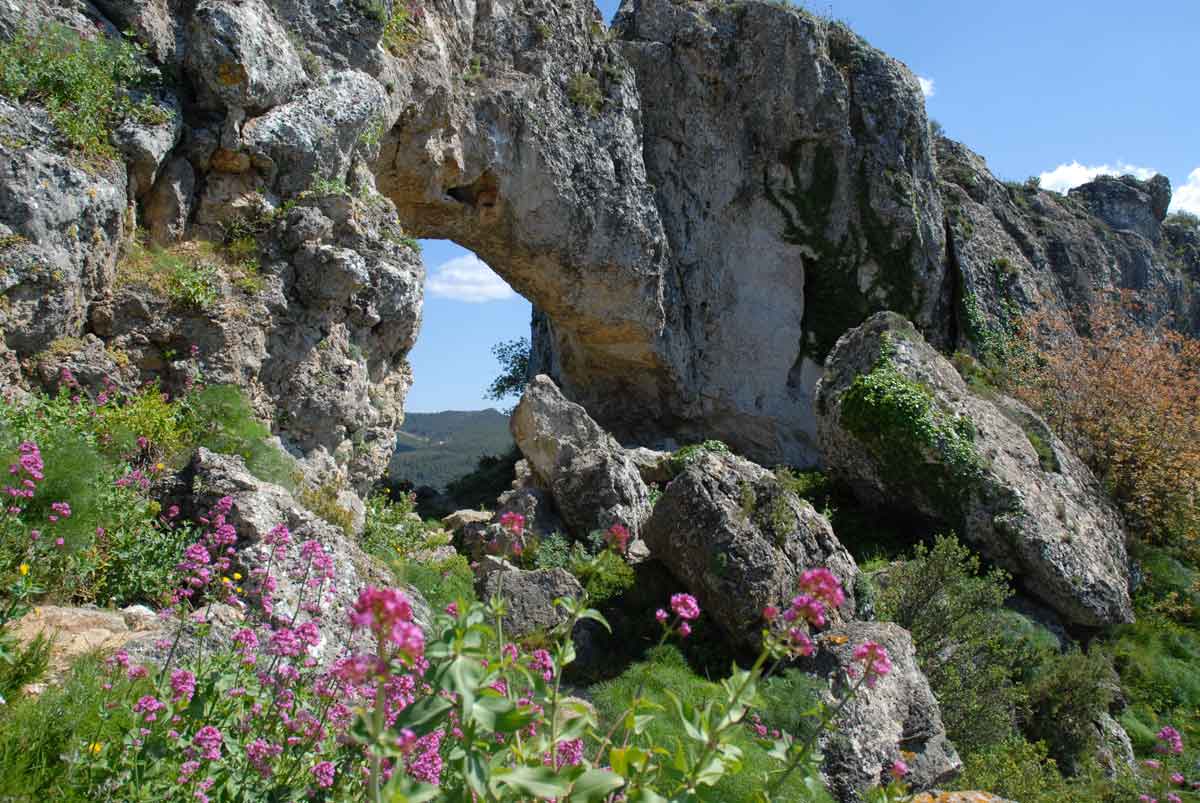
The Jalon Valley and Vall de Pop a green oasis on the CostaBlanca
This valley owes its existence to the Jalon River. Like many of the rivers in our area, this river is dry for much of the year. It rises at an altitude of 1300 meters, in the mountains of Alfaro and Serrella. After a journey of 53 km, this waterway flows into the Mediterranean Sea. During her descent her name changed to Rio Gorgos. The river irrigates the fertile Jalon Valley and the rest of the area towards the Mediterranean, especially after rainfall.
The Valley is located in the north of the province of Alicante and contains important cultural and historical heritage. This heritage consists of remains from the rich Moorish past such as the architecture typical of this area in dry natural stone. There are also ancient cave and rock paintings and this area has an important wine and gastronomic culture.
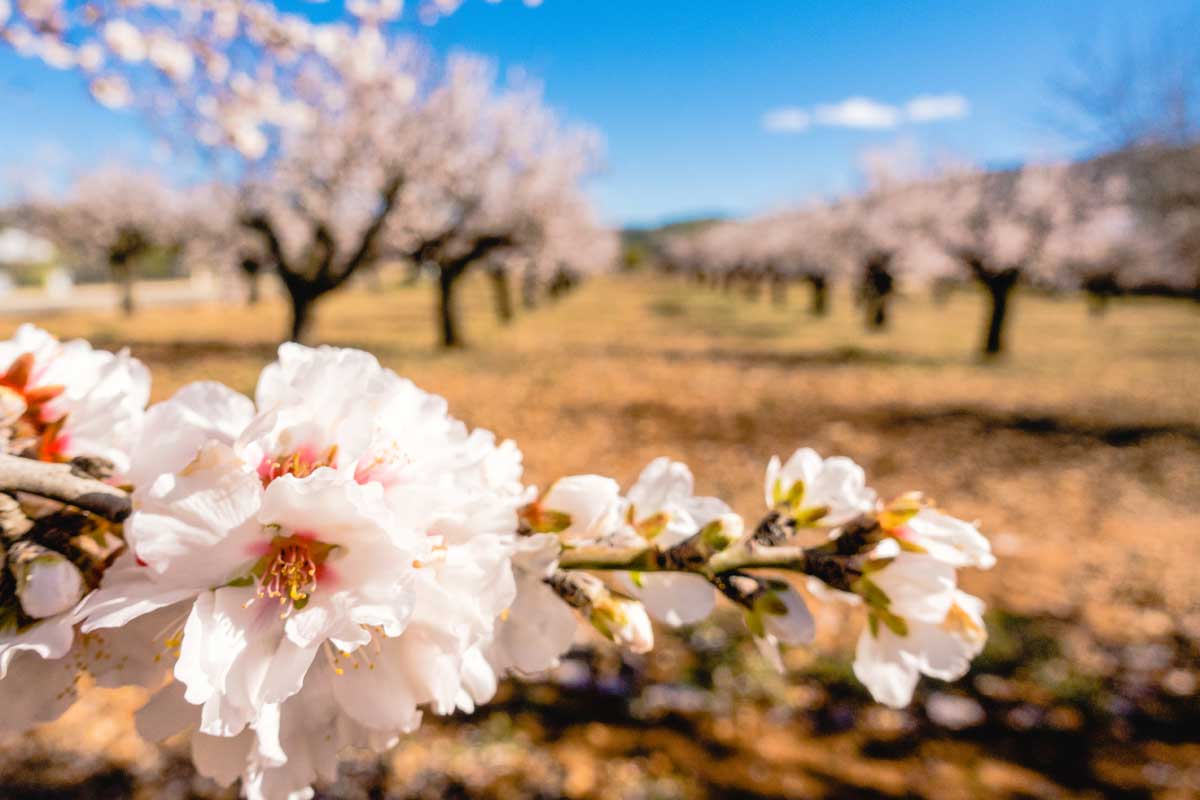
The Jalon valley is an area of contrasts: bare mountain ranges, deep gorges and fertile valleys. The terraced hills and small white villages, stand out against the clear blue sky. The villages were once Moorish settlements, as evidenced by names such as ‘Alcalali’ and Senija. It is an oasis of tranquility surrounded by mountains but a stone’s throw from the densely populated Costa Blanca. The valley visually has two peak moments: one in the fall, when the extensive vineyards color the valley deep red. And the other moment in January when the exuberant flowering of the almond trees colors the valley and its wide surroundings in white and pink.
Between the urban coast and a rural mountain area.
Vall de Pop is therefore located in a transitional area between the urbanized coast and the rural interior. The, climate, the hills and mountains together create a unique geographical enclave. The mountains ´Cavall Verd´, the mountain range of the ´Penyal de Laguar´, the ´Carrascar´, ´Coll de Rates´ and the ´Castell de la Solana´, with heights of around a thousand meters, run towards the Mediterranean Sea. These mountains alternate with more hilly and flat areas.
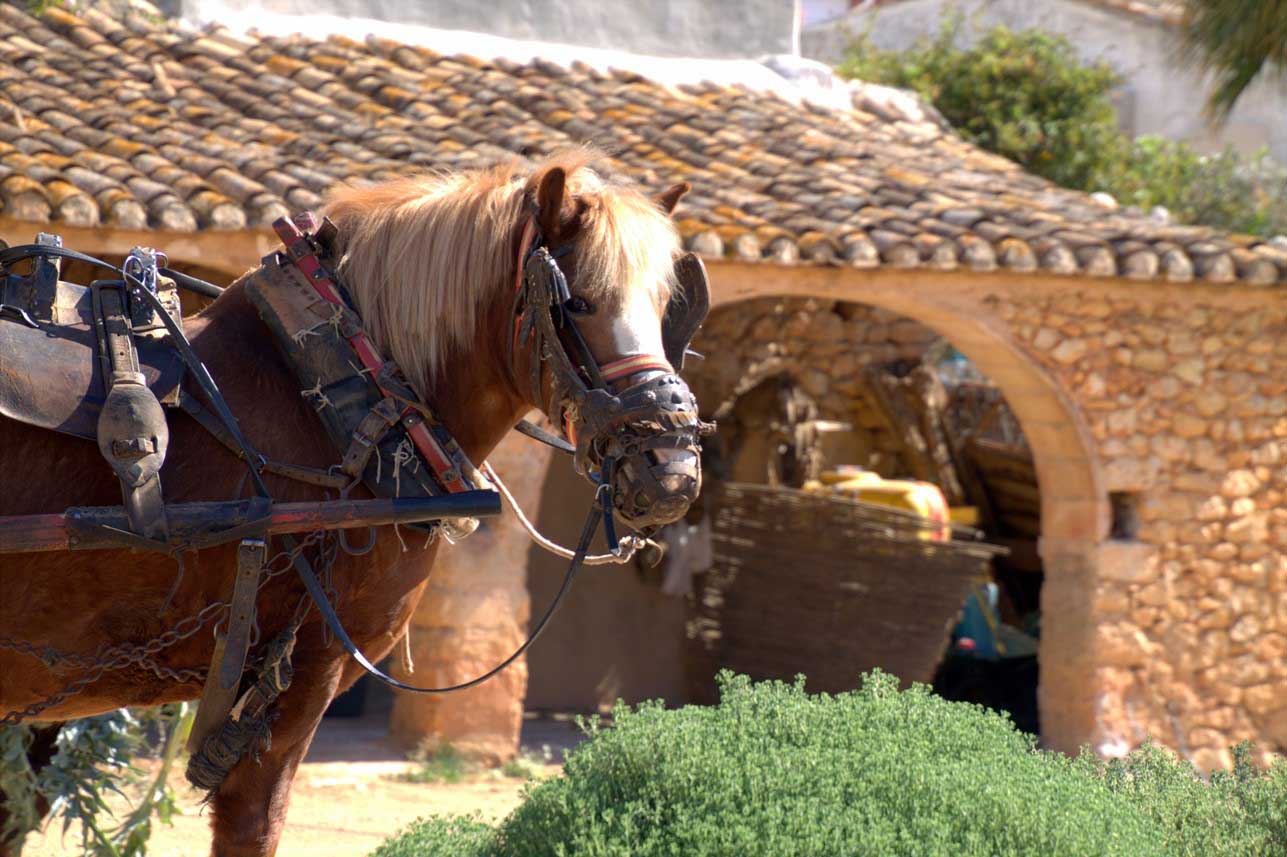
Due to its geographical location, there is slightly more rainfall here than in the rest of the area. This makes the Jalon Valley a green and lush area. This applies both to the natural vegetation of pines and holm oaks as to agricultural crops such as the olive, carob, almond, orange trees and the extensive vineyards. Without ignoring the other products, it is clear that the viticulture gives identity to our valley. Vall de Pop is the only wine region that is so close to the coast and is included in the official wine routes of the Valencian community. By the way, the tourist information centre in Jalon has lots of information about Vall de Pop and the Jalon Valley
Vall de pop and the Jalon valley, an ancient landscape dominated by vinyards
What is very typical of our area is the grape growing, where the grapes were processed into raisins. This history has influenced simple architecture. We are talking about the typical houses and farms with a ‘riu-rau’ A ‘riu-rau is a natural stone barn with a single roof, or in some cases a flat gable roof. The facade (s) consist without exeption of arches. This Valencian ´riu-raus´ are characteristic buildings that are unique to this area. They were built in the seventeenth, nineteenth and twentieth centuries to turn moscatel grapes into raisins. Most riuraus have three, four or five arches. The most interesting of all the Riu-raus is the large Riu-rau of the Lord of ‘Benissadeví’, where in August the grapes are immersed in boiling water with bleach to break the skin and allow them to dry quicker.
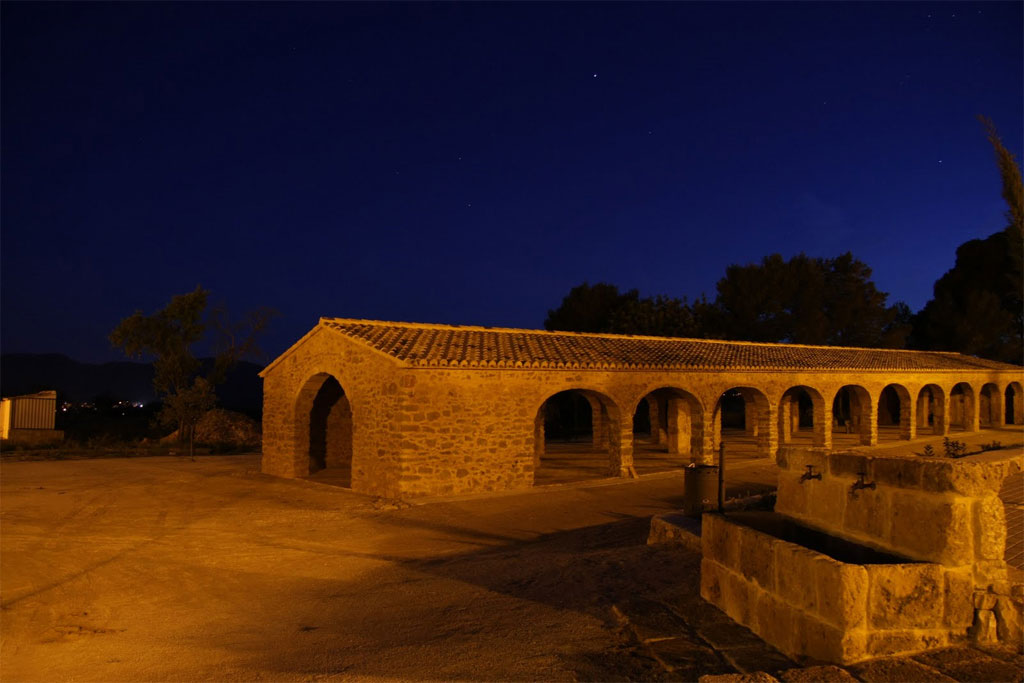
The arabs and the Balearic Islanders
The Arab heritage is clearly visible in the Vall de Pop. The system of waterways / ditches (acequias) the water cisterns, the stacked agricultural terraces have their origins in these past times. As mentioned earlier, all places were originally Muslim settlements. After the conquest of the Spanish king Jaume I, however, a period of forced coexistence began. This would result in conversions and the expulsion of the Moors in 1609. The gap left by the Moors was occupied by settlers who were taken from the Balearic Islands. That is a fact that has left a huge mark on the language (Valencian, a dialect of Catalan). Furthermore, the family names in this area are typical for the Balearic Islands. The local tradition of making meat products (embutidos) is also typical of the islands of Mallorca, Ibiza and Menorca.
The Jalon valley an ideal destination for your walking holiday, cycling holiday or climbing holiday
The seven villages that are part of the Commonwealth ´Vall de Pop´; Benichembla, Murla, Alcalalí, Parcent, Xaló, Senija and Llíber, are the starting point or transit point for a number of official hiking trails approved by the mountain sports association of the Valencian Community.
Here we only want to mention the PR-CV 158 Serra del Carrascar and the PR CV 426 Murla-Penyó Roig. For more information about our walking routes and walking holidays in Spain click on to our page walking holidays spain.
The first hike climbs the mountain ‘Carrascar de Parcent’, from here you have a fantastic view of the valley. The path departs from the town of Parcent, rises to the top of the Sierra del Carrasca. It then continues via the Coll de Rates and returns to the starting point via the Coveta dels Coloms and the Font de la Foia. The route is fourteen kilometers and can be walked in about six hours.
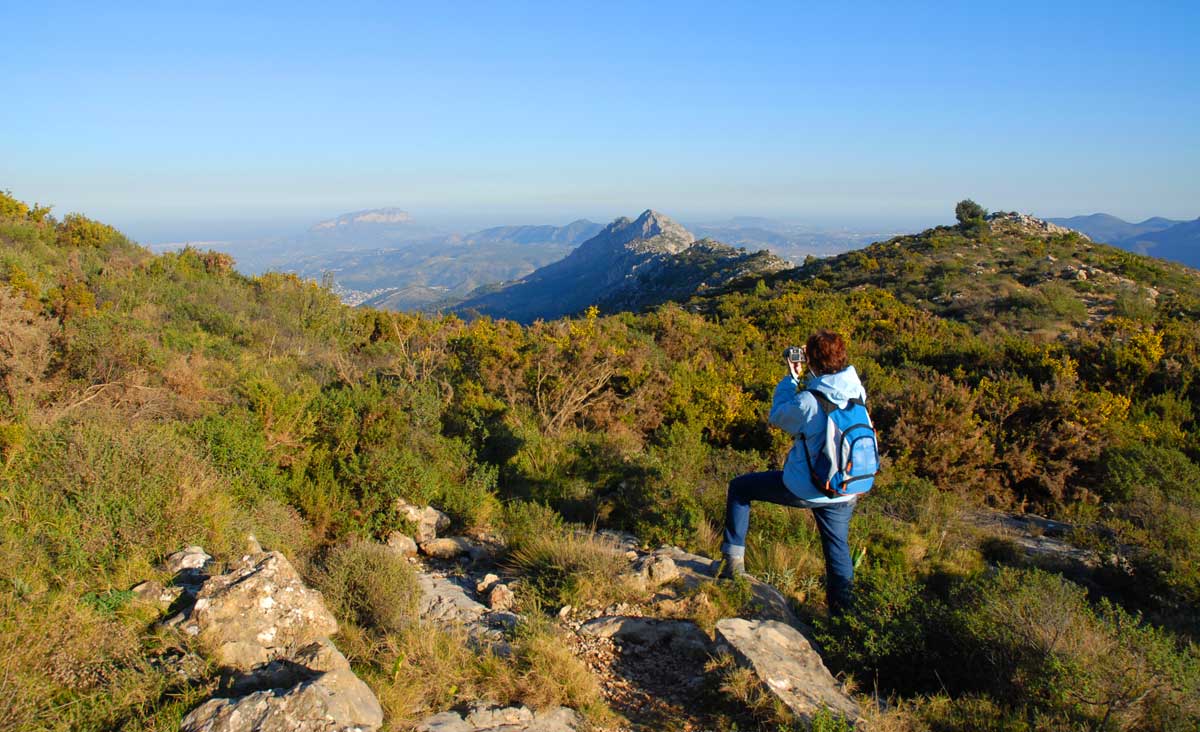
The second route goes from the village of Murla to the rock ‘Penyó Roig’ which is the top of the mountain ‘Cavall Verd’. This is a historic place where the Moorish rebels who refused to leave their country took refuge when King Philip III wanted to deport them. Although it is not the highest point of the mountain range, this summit offers spectacular and panoramic views of the Xaló River, the Seguili, the Montgó, the Segaria Mountains, the Carrascar and the sea.
No greater possible contrast than between the coast and the interior of the province of Alicante
Refugio Marnes is a Casa Rural, the Spanish variant of the Italian Agriturismo. We are therefore located in a rural area as you can expect it is. But we actually have ‘the best of both worlds’. The coastal road, ´the carretara nacional 332´ is 20 minutes by car from Refugio Marnes. And with the 332 you can easily reach the sea, and the nice coastal towns. But the other way around you find the quiet Spanish country life, in still unspoilt villages where life is slow. You can find nature reserves such as the area around the Sierra de Bernia that our Finca borders on. Did you know that Alicante is the most mountainous province in Spain? The province does not have huge mountains, but it houses a lot!
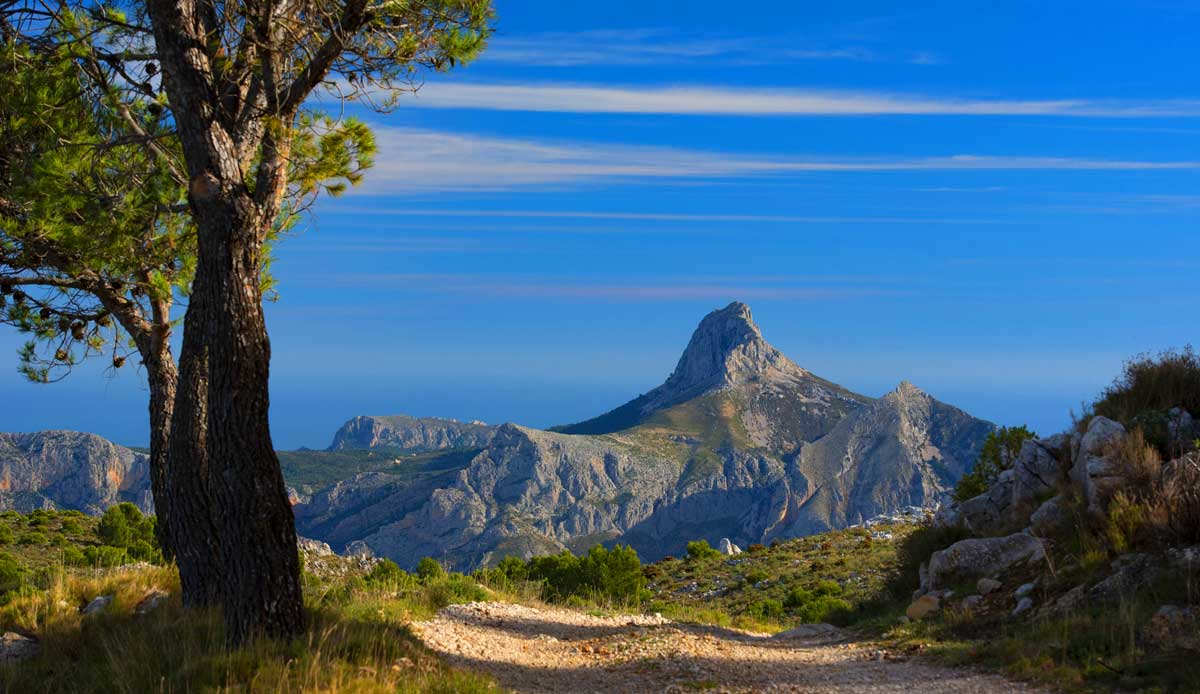
The Sierra de Bernia the mountain and its fauna
The “Sierra de Bernia” is a small mountain range that extends inland by 20 kilometres from the Costa Blanca. This area has not been affected by mass tourism, and is currently a largely protected area. Here you will find an enormous wealth of fauna: wild boar, foxes, the European wild cat, genet cats (marten-like), martens, ermine and weasel. Different types of reptiles such as geckos, emerald lizards and even the Moorish tortoise are still found here. For bird lovers – and who isn’t – there is a huge wealth of songbirds, owls, falcons, buzzards and other large birds of prey here. Look for the most common birds on our page for bird watchers. Other examples of nature reserves are the Sierra de Mariola near Alcoy and the Las Albuferas nature reserve, a swamp area just below Valencia.
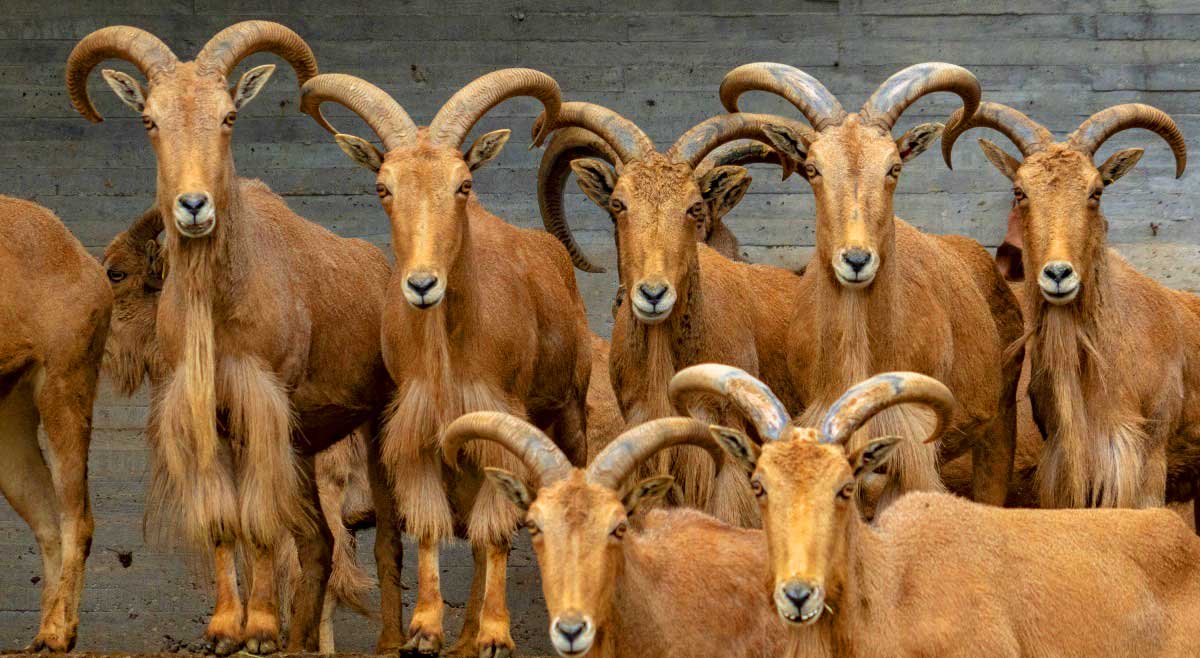
Holiday on the Costa Blanca, enjoying beachlife!
The Costa Blanca (literally translated “white coast”) extends over a length of around 200 kilometres along the Mediterranean Sea. This coastline is largely located in the province of Alicante, where you will find beautiful and quiet beaches with fine sand.In addition, you will also find rugged rocky bays and bays with pebble beaches (calas) in our area.
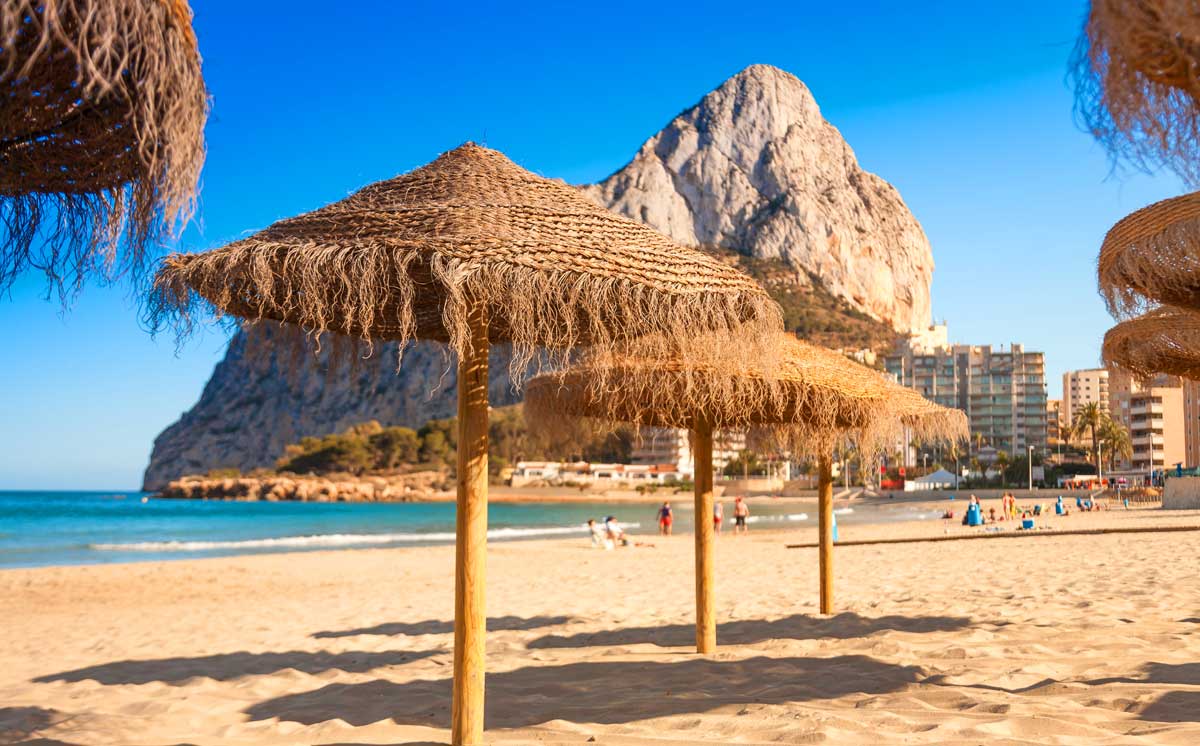
Spain is of course still associated with the words Sol y Playa (sun and beach) as they are known to many). You can read on this website from that the beach does not necessarily have to be the main purpose for your holiday here. The Costa Blanca has much more to offer.
But for many of our guests, the beaches are a great place to relax, enhance your tan and enjoy the sea. Below we list a small selection of these wonderful beaches. We made the selection based on what our guests found to be the nice beaches in our 17 years if existence and where they enthusiastically came back from.
The beaches and bays from Denia to Benitachell
From our rural holiday destination, you can be on the first beach within half an hour. But for our route we take the fishing village of Denia north of Refugio Marnes as our starting point. From Denia upwards, towards Valencia, sandy beaches stretch with sometimes some dune formations behind them. Also, in the summer there is enough space to find a private place on these long but not too wide sandy beaches. To name a two: Playa les Marines and above it, Playa les Bovetes
Towards Alicante there are also a number of nice bays and beaches. However, these are all rocky. Las Rotas is one of the nicer areas of Denia. It has a few fish and paella restaurants where you can enjoy a meal on a terrace by the sea. Las Rotas is popular with walkers and those looking for a secluded, sheltered bay for sunbathing and swimming.
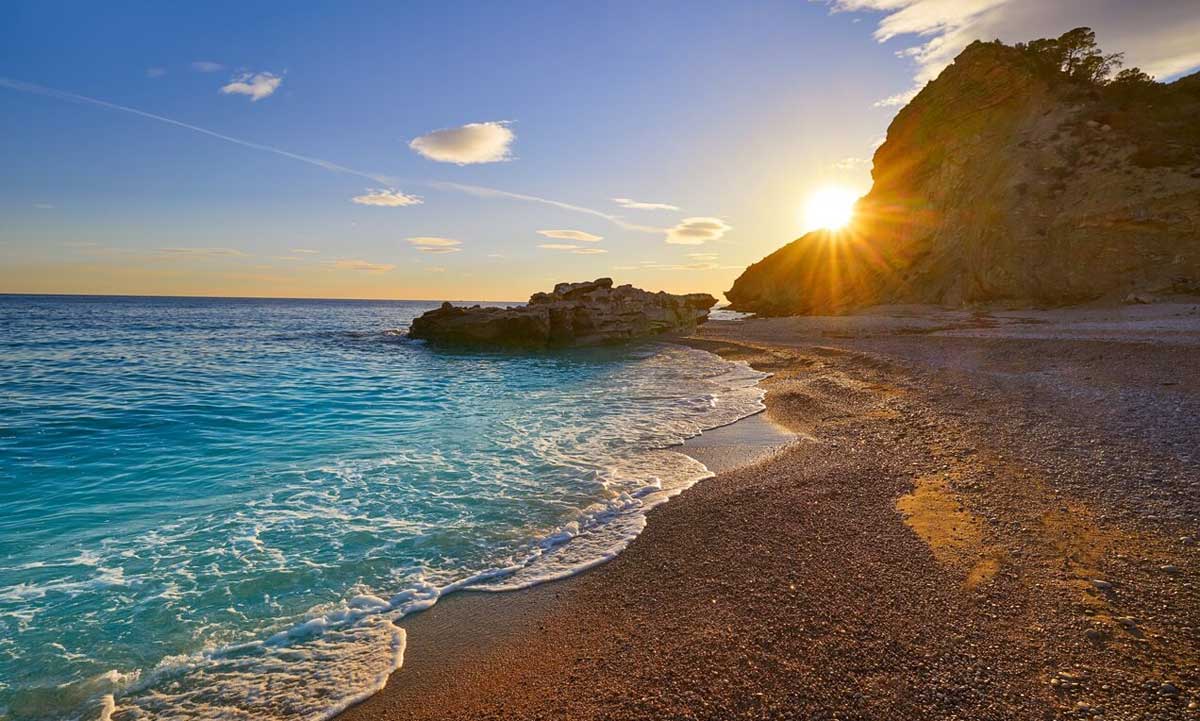
This rugged coastline gives shape to various picturesque bays, where you can spend the day in complete tranquility despite the tourist environment. This area is also very popular with divers and snorkelers, who can spend hours discovering the rich underwater life hidden in the rocky seabed.
This is a video about the Beaches in and around the town of Denia
The beaches of Javea or Xabia
If we descend further south, then we first come to the other side of the Mountain the ´Montgo´ in the super fun and popular town of Javea. Javea has a varied selection when it comes to beaches. The popular large central sandy beach, directly in front of restaurants and bars, is called ‘El Arenal. Towards Denia there are two beaches, Playa La Grava and Playa el Benissero, both gravel beaches. On the other side of El Arenal a series of coves start. The first is Cala Blanca a nice little bay, not too far from the central beach. After that the rocky coast starts to rise you find the coves Caleta 1 and Caleta 2, cala Sardinera, cala Barraca, cala Ambolo and Cala Granadella.
Continuing our journey we arrive at a cove called ´El Morach´. This is an Ibiza-like pebble beach with two chirinquito´s (beach bars, open from the beginning of June until september).You first have to pass the eyesore, Cumbre del Sol urbanization in Benitachell. But if you are through, then you are truly in a heavenly place where you can swim, dive off the rocks and enjoy the sun but don´t forget your factor 50!
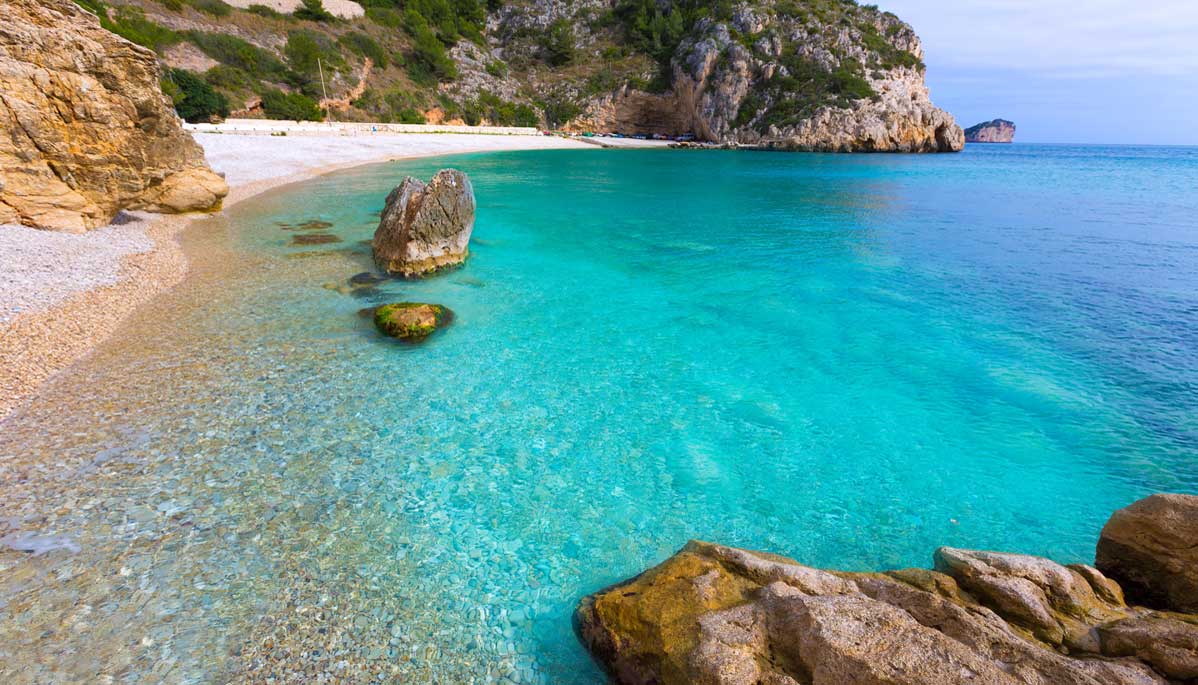
The beaches from Moraira to Calpe
If you travel a little further down the coast, you will pass Moraira where the beach El Portet (the harbour) is a favourite among parents of smaller children. The water at this narrow sandy beach is shallow and therefore quickly warms up. Directly behind this nice beach you will find nice eateries and bars. In addition to this small beach, Moraira also has the larger Playa La Ampolla beach, which is also a sandy beach, but larger than El Portet.
f you leave Moraira on the road to Calpe you will pass small bays such as Playa Les Platgetes, Cala de L´Andragó, Cala Cap Blanc, Cala Baladrar and Platgeta de l’Advocat. You continue past Cala de la Llobella and last but not least, Cala Pinets and Playa la fustera.
Then there is the larger coastal town of Calpe that has a few large sandy beaches, namely Playa Arenal Bol and Playa de Levante or la Fossa, as it is commonly known.
Calas and beaches from Calpe to Villajoyosa
If you pass Calpe, you will find a lovely beach in a place that used to house a leper colony! In the past, it was only accessible via the sea due to the risk of contamination. Now just accessible by car, you will find Mascarat beach. Mascarat used to be a nudist beach, but textile took over. Altea is the next coastal town where the first beach is Playa de la Olla. The beaches around Altea are all pebble beaches, by the way.
From Altea there are some calas around Benidorm that are worth a visit. These include Raco Coníl and a little further on at Villa Joyosa, Playa de Torres, Cala la Caleta and Cala L’Esparrelló. The last beach is a nudist beach with a pleasant mixed crowd.
Fiestas on the Costa Blanca, Alicante and the Valencia area, celebrate them with us
Spaniards know how to party
Spaniards are known for their parties and when they celebrate, they really go the whole way. Most parties have a Catholic, spiritual background. An explanation that is given for these huge celebrations is that Spanish Catholicism is a bit heavier in hand than, for example, Italian. These weeks-long parties would serve as compensation for this melancholy.
Morros y Cristianos – a musical fiesta with ancient roots
One of the well-known and big festivals is ‘Moros y Cristinanos’ where the Christian victory over Moorish rule is celebrated. These festivals have a long tradition and go back to 1490. They celebrate famous Moros y Cristianos festivals in Elda, Alcoy and Villena. If you’ve never seen these parties before, you can’t imagine how impressive they are. It is the combination of beautiful costumes and beautiful Spanish horses. The insanely beautiful robes and the music punctuated with Moorish sounds. The heavy drum roll, the popping of shots from the muskets and gunpowder air, which make it a feast that you will not easily forget.
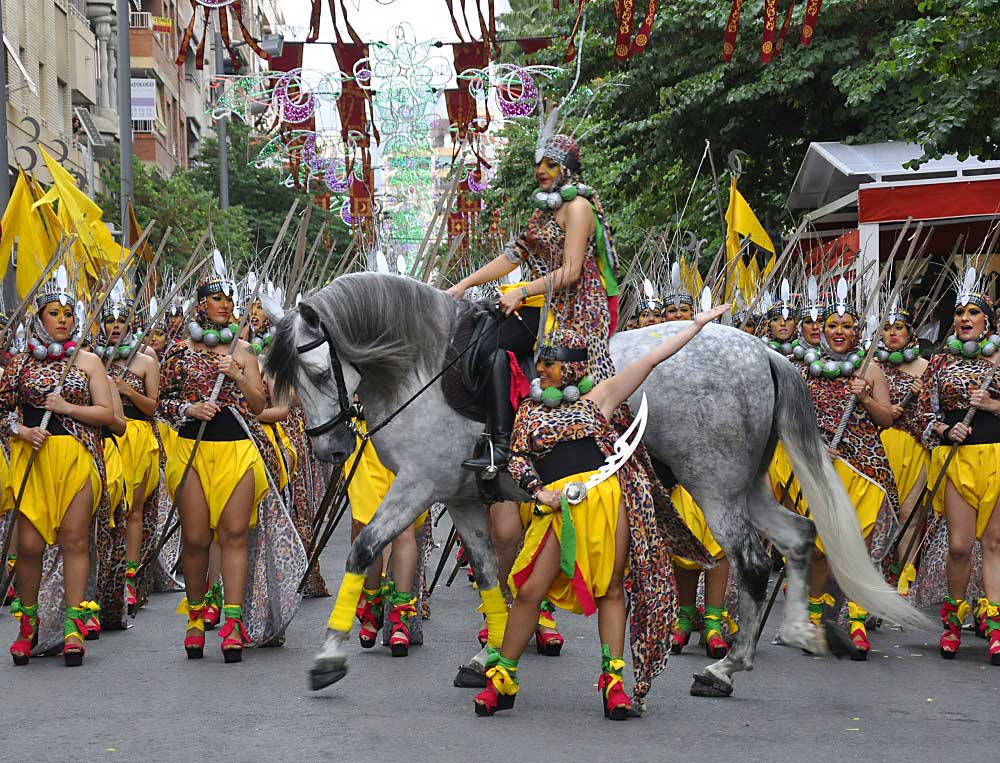
A nice side effect is that this ‘fiesta’ contributes considerably to the areas income and is a constant source of employment. In the municipality of Villena with a population of around 35,000, a turnover of 6 million euros was reported in 2018 as an economic factor from the morros and cristianos. The residents spend a considerable amount of money to be able to celebrate these parties, and sometimes have to save all year for it.
Patronal feasts in the land of Valencia, the feast of the patron saint of Benissa
Every village or town in Spain has its patron saint. In the Roman Catholic religion, this is a saint or an angel who is honoured as protector of the town or city. Obviously, this saint has “its birthday” and that must be celebrated! It goes way too far to list all of thesefiestas for the entire area. That is why we take Benissa’s patronal feasts as an example. Here the saint is called Purrísmia Xiqueta (the virgin).
The devotion for ‘La purisima xiqueta’ dates from 1640. The virgin is depicted in a painting of the immaculate conception, on a wooden tablet of only 38 cm high. This work is attributed to the school of Juan de Juanes. Juan de Juanes was an important Renaissance painter. He is the author of the Last Supper on display at the Prado Museum. The work is a gift from pilgrims to the town of Benissa, and is now the centrepiece of the huge party.
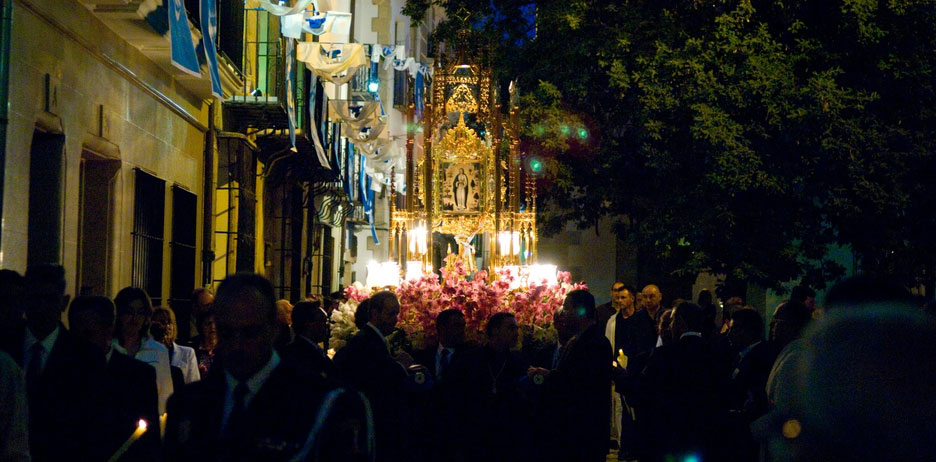
Originally these fiestas may be Christian, but it is now a party with pop concerts, funfair, markets, etc etc ,. The atmosphere of the procession seems to be something very cinematic. The parade that you see in the photo above, in which the image of the virgin is carried through the streets on a large portable, takes you back hundreds of years. This fiesta is celebrated in April at the beginning of May. For the agenda you can always look at the Benissa website
Fallas and hogueras, Fiestas on the Costa Blanca and inland Alicante
The origins of Fallas and hogueras festivals date back to the ancient tradition of the carpenters of the city. These craftsmen burn on the eve of the feast of their patron saint San-José (Saint Josef) for their studios, on the street and on the ‘Plazas’ squares, the wood waste from their workshops. For that reason, the day of the cremà (time when the falla creations are burned) always coincides with the 19th of March, when San José is celebrated.
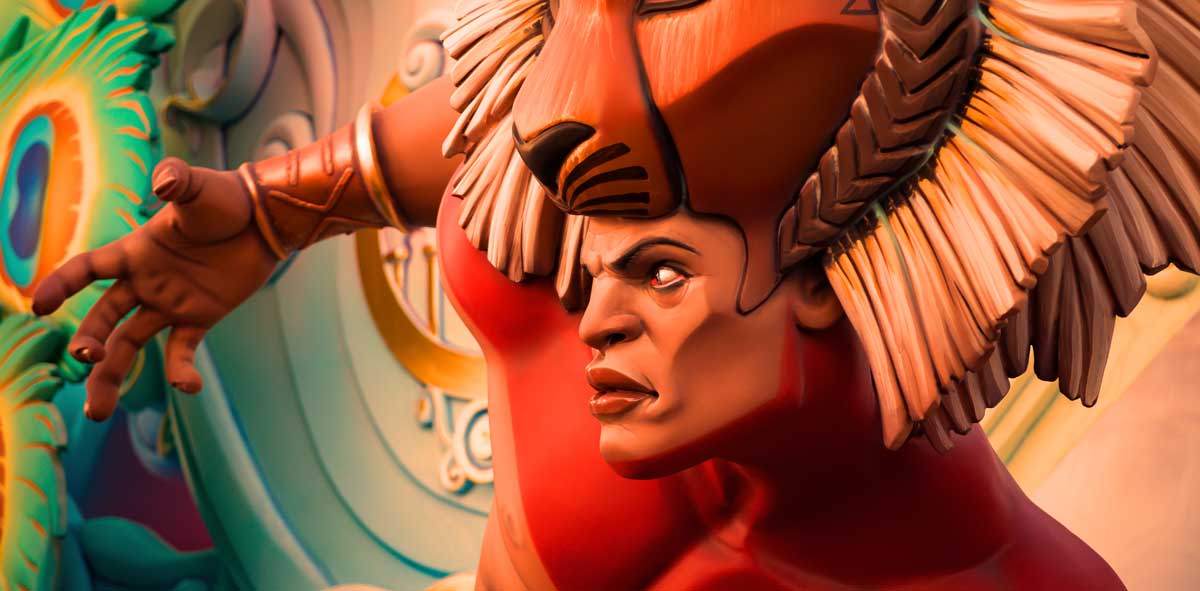
Small parties grow big, the evolution of these Fiestas,
Until the eighteenth century, the Fallas remained reduced to burning piles of combustible materials that were burned at dusk on the eve of San José. However, this burning of wood waste has gradually developed. And they became neutral representations, figures and representations with more and more political or social significance. Now they are huge works of art with a critical and ironic meaning, in which, for example, public figures are nailed to the pillory. Furthermore, all kinds of social and political themes are depicted. These parties also ensure an enormous cash flow for the municipalities.
For example, one Falla can cost several hundred thousand euros. These costs are raised by members of the Falla, which can be entire neighbourhoods who unite in what they also call a Falla, a group of falleros. Valencia and Alicante also have a very good name in the set design, and the skills for this were created during the preparations for these parties. Set construction is therefore an important source of employment for this environment.
The Fallas Festival declared the intangible heritage of humanity
The Costa Blanca and the interior of Alicante: There is a lot to tell about these really fantastic parties, but we will limit ourselves here. If you want to read more about these parties and the city, you can request the programme on this page from the town hall of Valencia, even in English. The population of Valencia has more than tripled during these festivals. The great thing is that there are never riots. It also remains a relaxed city on the Mediterranean during these parties. The Fallas program covers more than two weeks. The programme, among other things, consists of a daily huge firework display called the ‘mascleta’. This takes place every day at two o’clock at la plaza del ayuntamiento, in front of the town hall.
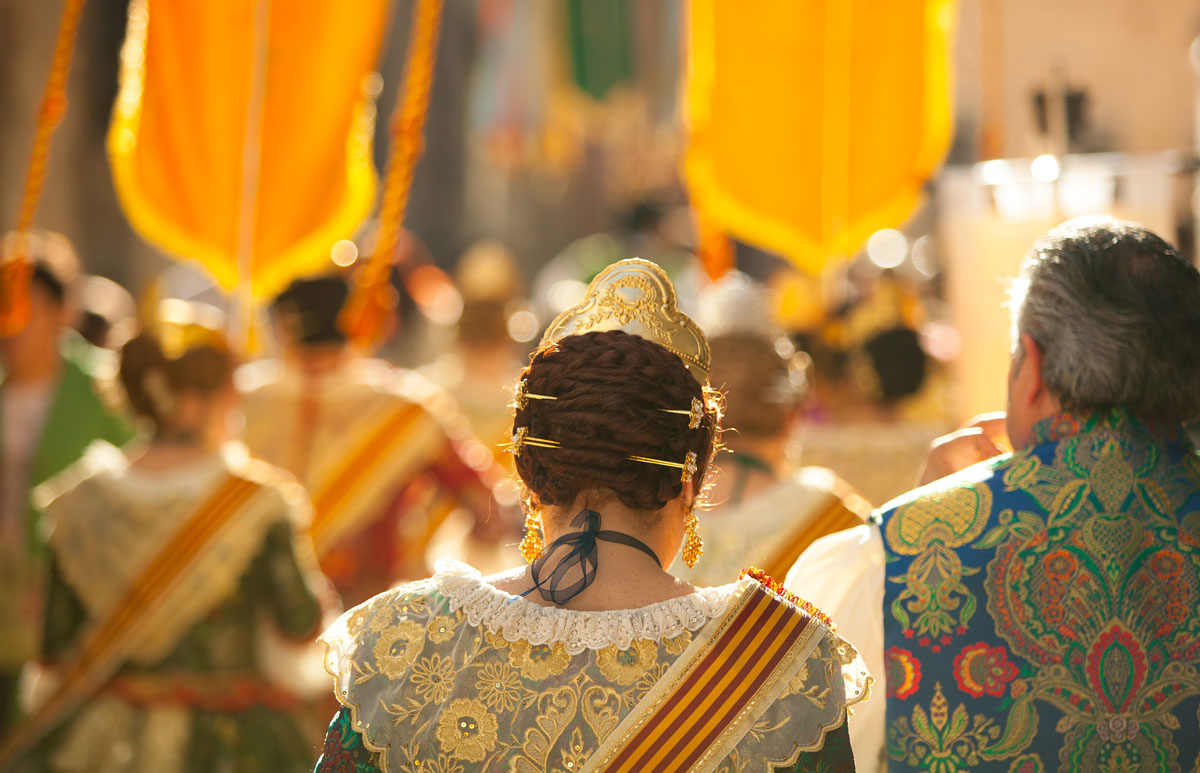
Fallas, huges and precious figures with a nod to society
Viewing the Fallas is an experience in itself. But if you are there, make sure you are at ´la crema´ The Fallas, one after the other, are set on fire by a blast firing that starts the fire. It seems as if the entire city is on fire. On every square there is a falla, some of which are up to 20 metres high, on fire. From an environmental point of view, very bad, but the party around it is so captivating.
What makes this party so special? The crema is the climax of this weeks-long party. You feel that everyone has waited for this. At the ultimate moment, it is the actions of the fire brigade that is holding back the fire everywhere. Along with the compelling music, the smell of gunpowder, the extremely festive and excited atmosphere that make it so special. Fallas is really a fantastic party. ¡Viva España!
Come back again to this page about the Costa Blanca, as we regularly add content.
This page is under development – come back to view the sequel! We will soon provide more information about the party Las Hogueras in Alicante for example. Further more we will cover the cultural offer that the Costa Blanca has on display and much more.
In the meantime, should you feel like exploring this area thoroughly. Then have a look at our rural holiday destination Refugio Marnes. This is a sustainable Agriturismo in Spain. Here you can stay on a completely self-catering basis at four locations dotted around our property. The holiday Finca, Finca Iris sleeps up to 8 people. We also have the Casa Grillo Holiday home and in the La Jaima Glamping tent (up to 4 people and from April to October).
You can also stay with us on a bed and breakfast basis in the rooms of Los Establos, or in the B&B rooms of La Finca. Richard Steenblik and Willem Pieffers are your English-speaking hosts and are happy to guide you during your unforgettable holiday on the Costa Blanca. In addition to a normal chill holiday, beach holiday or walking holiday, you can also come here to celebrate your cycling holidays, climbing holidays or bird watching holiday.




